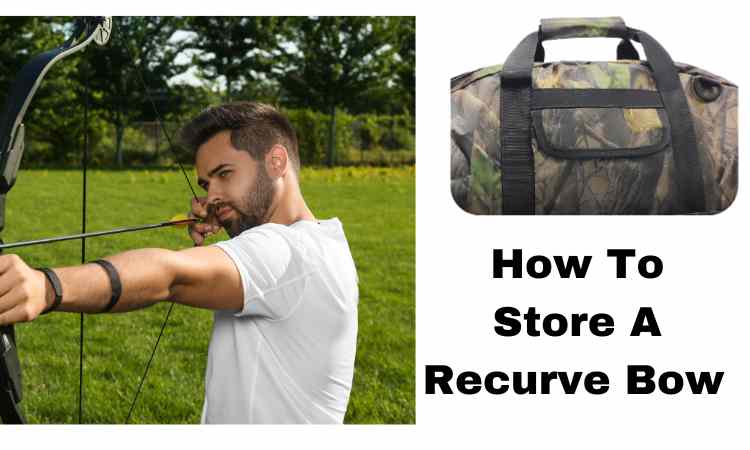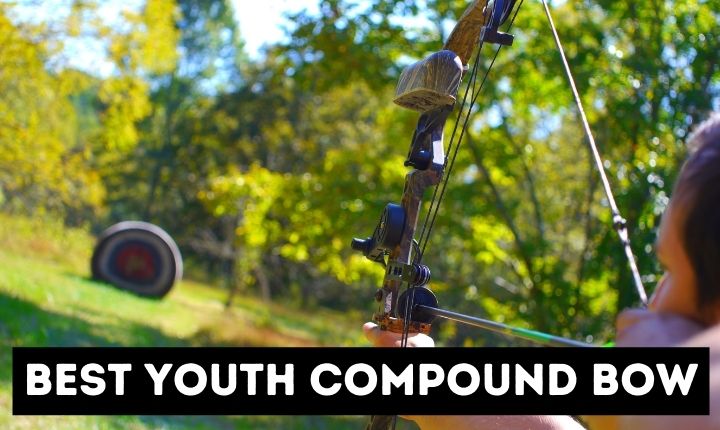Attention all archery enthusiasts and seasoned brewmasters.
Are you concerned about the safety and longevity of your beloved recurve bow?
Look no further. In this gripping blog post, we delve into the art of storing a recurve bow, revealing six proven methods that will make your heart skip a beat.
Whether you’re a seasoned pro or just starting your archery journey, fear not.
We’ve got you covered with expert advice that will ensure your bow remains secure and protected.
So, brace yourself and get ready to unlock the secrets of proper recurve bow storage.
How To Store A Recurve Bow?
Method 1: Invest in a Quality Bow Case (Soft and Hard)
Investing in a top-notch bow case is vital for bow owners seeking to safeguard their valuable equipment.
Not only does it shield your investment, but it also ensures that your bow remains in pristine condition and is always ready for action.
Selecting the right bow case involves several key factors: the bow type, desired level of protection, and budgetary considerations.
Ensure the case is tailored to fit your specific bow, accounting for unique shapes or additional storage needs.
Assess whether a hard case, ideal for frequent or rigorous transport, or a more affordable and easily portable soft case suits your requirements.
Remember, prioritizing a quality case now can extend the longevity of your bow and save you future expenses.
Here’s a comparison of soft cases and hard cases for investing in a quality bow case:
| – | Soft Case | Hard Case |
|---|---|---|
| Material | Durable fabric or nylon | Hard plastic or composite |
| Protection | Provides moderate protection | Offers high-level protection |
| Portability | Lightweight and easily portable | Heavier and less portable |
| Waterproof | May provide limited water resistance | Offers better water resistance |
| Impact Resistance | Provides moderate impact resistance | Offers high-impact resistance |
| Customization | Often available with adjustable compartments and pockets | Limited customization options |
| Price | Generally more affordable | Often more expensive |
Benefits of Using a Bow Case:
- Protects the bow from accidental damage
- Keeps the bow clean and dry
- Prevents moisture from accumulating on the bow
- Protects the bow from extreme temperatures
- Makes it easy to transport the bow
Tips for Choosing the Right Bow Case:
Choose a case that is the right size for your bow. Measure the length and width of your bow and add a few inches for clearance.
A case that is too small may squeeze the bow, causing damage, while a case that is too large may allow the bow to shift and potentially damage the limbs.
Look for a case made of durable materials such as polyethylene or polypropylene.
These materials are resistant to water, UV rays, and impact, making them ideal for protecting your bow.
Look for a case with ample padding to protect the bow from impact.
High-density foam or padded dividers can help prevent damage to the bow’s limbs and string.
Consider purchasing a case with additional storage for accessories such as arrows, quivers, and tools. This can help keep everything organized and accessible when you need it.
Method 2: Use a Bow Rack or Hanger
Imagine walking into your personal archery sanctuary, and there it is, your majestic recurve bow, prominently displayed on a sleek bow rack or hanger.
This storage method exudes both functionality and style. By utilizing a bow rack or hanger, you elevate your bow’s safety and accessibility.
The benefits are profound—your bow stays off the ground, safe from accidental damage and moisture. Mounting it on a wall or ceiling not only saves space but also adds a touch of elegance to your archery corner.
Just picture the convenience of having your prized bow within arm’s reach, ready for action.
Installing a bow rack or hanger requires careful consideration, ensuring a secure and dry location.
By embracing this method, you blend practicality and aesthetics, transforming your recurve bow storage into a display of archery devotion.
Benefits of Using a Bow Rack or Hanger:
- Keeps the bow off the ground, protecting it from moisture and accidental damage
- Makes it easy to access the bow
- Can be mounted on a wall or ceiling, saving space
Tips for Installing a Bow Rack or Hanger:
Choose a location that is out of reach of children and pets.
Make sure it is securely attached to a wall or ceiling using appropriate hardware.
Use the appropriate type of hanger for your bow. Some hangers are designed for longbows, while others are made for recurve bows. Make sure you are using a hanger that is compatible with your bow.
Method 3: Use a Bow Press
Using a Bow Press is a common technique used by archers to adjust the tension on their bows.
A bow press is a device that compresses the bow limbs, allowing for the replacement or adjustment of strings, cables, or other components.
This method requires experience and caution, as improper use of a bow press can damage the bow or cause injury.
Additionally, archers should have a basic understanding of their bow’s construction and should be comfortable working with its various components.
With proper care and attention, the use of a bow press can ensure a properly tuned and maintained bow for optimal performance.
Benefits of Using a Bow Press:
- Helps maintain the bow’s accuracy and performance
- Protects the bow from over-tensioning, which can cause damage to the limbs and string
Method 4: Use a Bow Sling
Carrying your recurve bow with ease and protecting it from accidental drops or damage is made possible with the use of a bow sling.
This simple yet effective accessory allows you to keep your hands free while ensuring your bow stays within reach.
As you venture into the wilderness or engage in shooting sessions, the bow sling becomes your reliable companion.
Its secure attachment to the bow’s handle provides peace of mind, allowing you to focus on your archery skills without worrying about the safety of your precious weapon.
Embrace the convenience and security offered by a bow sling, and let it accompany you on your archery adventures.
Benefits of Using a Bow Sling:
- Makes it easy to carry the bow without using your hands
- Protects the bow from accidental drops or damage
- Allows you to keep the bow within reach while hunting or shooting
Method 5: Store the Bow in a Temperature-Controlled Environment
Storing your recurve bow in a temperature-controlled environment goes beyond just protecting it from extreme temperatures and moisture.
It also helps preserve the delicate balance of materials within the bow.
Different materials, such as wood, fiberglass, and metal, expand and contract at different rates when exposed to temperature changes.
This can lead to stress and potential damage to the bow’s structure over time.
By maintaining a consistent temperature, you prevent these materials from undergoing unnecessary strain and ensure that the bow remains structurally sound.
Moreover, consistent temperature control helps preserve the bow’s limbs’ flexibility, which is essential for optimal performance and accuracy.
In addition to temperature, humidity levels play a significant role in bow storage.
High humidity can lead to moisture accumulation, causing rust, warping, and degradation of the bow’s components.
A controlled environment with low humidity prevents such issues and keeps your bow in pristine condition.
Therefore, when selecting a storage area, it’s important to consider both temperature and humidity control.
By addressing these factors, you create an ideal environment that safeguards your recurve bow, allowing you to enjoy its precision and reliability every time you pick it up.
Benefits of Storing the Bow in a Temperature-Controlled Environment:
- Protects the bow from extreme temperatures
- Prevents moisture from accumulating on the bow
- Helps maintain the bow’s accuracy and performance
Tips for Maintaining a Consistent Temperature in the Storage Area:
Choose a storage location that is not prone to temperature fluctuations. Avoid areas near windows, doors, or heating/cooling vents.
Use a thermostat to maintain a consistent temperature in the storage area. Aim for a temperature between 60-70 degrees Fahrenheit.
Use a dehumidifier to reduce moisture in the storage area. High humidity can cause moisture to accumulate on the bow, leading to rust and damage.
Method 6: Regularly Check and Maintain the Bow
Regularly checking and maintaining you’re recurved bow goes beyond just a cursory inspection.
It requires a keen eye for detail and a commitment to its upkeep.
While it may seem tedious, this method is crucial for preserving the integrity of your bow.
When checking your bow, thoroughly examine it for any signs of damage, no matter how small.
Look for cracks in the limbs, warping of the bow’s structure, or any bending that may affect its performance.
Don’t dismiss seemingly minor issues, as they can escalate and compromise the bow’s functionality over time.
Keeping your bow clean is equally important. Use a soft, dry cloth to wipe away dirt, grime, and moisture.
Pay close attention to hard-to-reach areas, such as nocks and string grooves.
Apply a bow wax specifically formulated for your bow’s material to protect the wood and prevent drying or cracking.
Additionally, stay vigilant and address any necessary repairs promptly. This includes replacing worn-out or damaged strings, limbs, or other components.
Seeking professional assistance for repairs is highly recommended to ensure the job is done correctly.
By regularly checking and maintaining your recurve bow, you not only extend its lifespan but also optimize its accuracy and performance.
It’s an investment of time and effort that pays off in the long run, safeguarding your bow and enhancing your archery experience.
Conclusion
In conclusion, storing a recurve bow safely is essential to maintain its longevity and effectiveness.
By following the six methods outlined in this article, you can protect your bow from accidental damage, moisture, and extreme temperatures.
Whether you choose to invest in a bow case, use a bow rack or hanger, or maintain the bow regularly, it is crucial to prioritize the safety and care of your recurve bow.

General Manager & Auditorial Head.
Killian Jake is a World Sports Traveler and hobbyist sports lover. By exploring different sorts of playing modules like indoor, outdoor, and many more. As for professionalism and writing, it’s helpful to give you the right suggestions on different games and sports.





